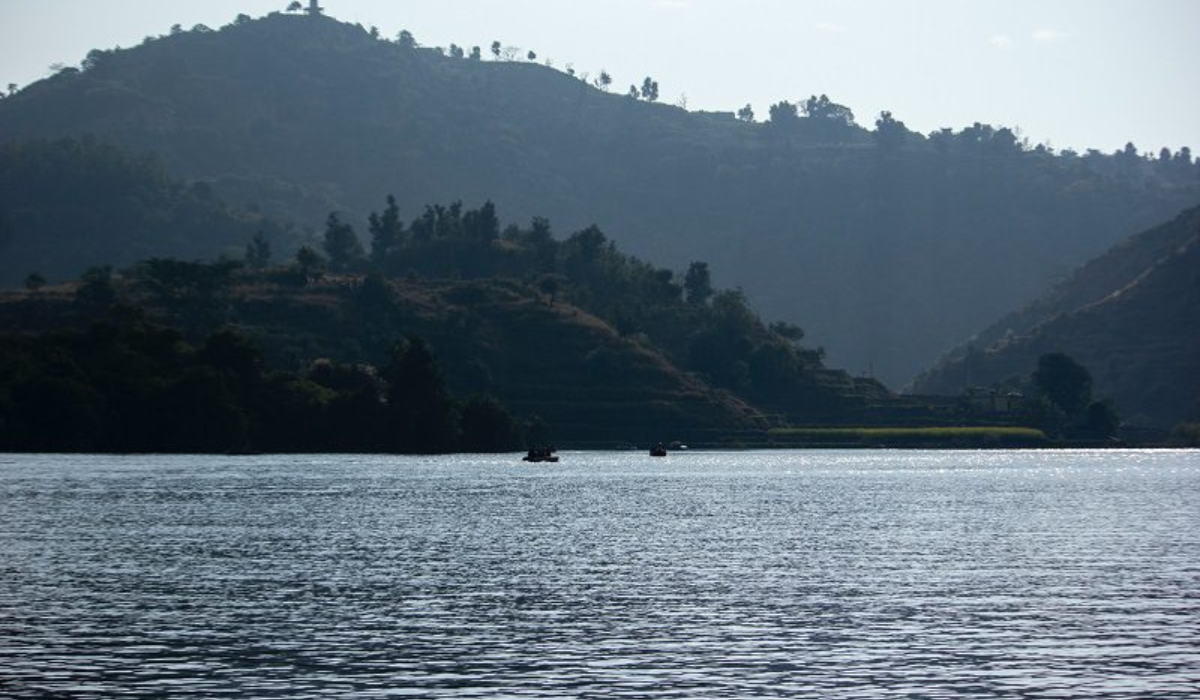Morni, nestled in the Morni Hills, stands at an altitude of 1,267 meters (4,157 ft) in Haryana’s Panchkula district. Situated approximately 45 kilometers (28 mi) from Chandigarh and 35 kilometers (22 mi) from Panchkula city, it is renowned for its panoramic Himalayan vistas, diverse flora, and picturesque lakes. Legend traces the name “Morni” to a benevolent queen who ruled the region two millennia ago, known for her justice and nobility. Furthermore, Morni held the status of a jagir under Raja Mir Syed Muhammad Baquar Ali Khan.
Morni Hills Lake View:
The Morni Hills Lake, also recognized as Morni Lake, stands as a meticulously crafted reservoir at the heart of Morni. Providing a haven for boating enthusiasts, it allows visitors to bask in tranquility amid the hills. Nestled in the Morni Hills region of Panchkula district, Haryana, India, this scenic man-made lake emerges as a focal point for tourists seeking a peaceful and idyllic atmosphere. Surrounded by the verdant landscapes of Morni Hills, the lake offers a refreshing ambiance, becoming a cherished haven for nature enthusiasts and photographers alike. Boating facilities further enhance the experience, inviting visitors to embark on leisurely rides across the serene waters—a popular pursuit, particularly on weekends and holidays.
Picnic Spot:
The serene and natural environs of the lake make it an ideal setting for picnics. Families and groups frequently choose this spot to unwind amidst nature, providing a peaceful escape from the hectic pace of city life.
Forts in Morni Hills:
Morni Fort Museum:
In the Morni region lies a fort dating back two millennia, attributed to Queen Morni’s construction. Folk songs echo the queen’s nobility and justice. The hills, adorned with pine trees, are sought-after trekking destinations. Notably, the fort, now a museum since the fiscal year 2017-18, showcases historical photographs, raises awareness about plastic hazards, and serves as a nature study center. The Haryana Forest Department has successfully transformed this ancient fort into an educational hub, preserving its historical significance.
Garhi Kotaha Fort:
Garhi Kotaha is a fort on NH1 which lies 27 km south of the Morni Fort and 3 km east of Raipur Rani tehsil headquarters. It now lies in ruins since it was partially demolished by the British Raj after the Indian Rebellion of 1857.[4] Mir Muslims of Kotaha ruled from Garhi Kotaha Fort with smaller forts at Morni and Massompur.
Masoompur Fort:
Masoompur Fort stands as a compact outpost fort, featuring robust stone-brick masonry walls atop a mud hillock. Positioned to the northeast of Massompur village, approximately 5 km from the primary Garhi Kotaha Fort, accessible through the road passing Rehana village. Its construction aimed at regulating the access route to the Samlotha temple, situated northeast of the fort.
Historically, it collected jizya from Hindu pilgrims heading to the sacred site, serving as a substantial religious ransom tax.
Morni Hill’s Archaeological Temple Site has historical significance:
Thakur Dwar Temple:
Thakur Dwar temple on Tikkar Taal’s shores, dedicated to Lord Krishna, stands on the site of a 10th-century temple. During excavations in 1970, Hindu sculptures from the Pratihara era (7th to 11th century CE) were discovered. Artifacts from Morni Hills are split, with some at Chandigarh’s Government Museum, and others still housed at Thakur Dwara temple.
Also Read: Mansa Devi Temple Panchkula
Bhuri Singh Deota Temple:
At 1870 meters in Pejarli village, the cliff temple honors the folk deity Buri Singh, offering a unique spiritual experience. The temple offers an unobstructed view of the Ghaggar River, providing a unique spiritual experience in picturesque surroundings.
Herbal Forest:
In 2018, Haryana, with community groups and Patanjali Yogpeeth’s support, created a 50,000-hectare herbal forest, fostering herbal cultivation and conservation.
Morni Hills Houses a Wildlife Sanctuary:
Nestled in the Morni of Panchkula district, Haryana, India, the Morni Hills Wildlife Sanctuary is a protected expanse spanning about 54 square kilometers. This sanctuary stands as a haven for biodiversity, showcasing a plethora of flora and fauna, drawing nature lovers, wildlife enthusiasts, and avid birdwatchers to explore its natural allure.
Thriving habitat for diverse plant and animal species, including rare varieties, shaping a vibrant ecosystem within the sanctuary’s boundaries. Comprising a blend of deciduous and evergreen forests, it fosters a rich and varied ecosystem. Among its notable residents are Sambar deer, Spotted deer (Chital), Wild boar, Indian crested porcupine, Leopard, and various reptiles and amphibians. With over 200 bird species recorded, the Morni Hills Wildlife Sanctuary emerges as a paradise for birdwatchers, hosting Grey Hornbill, Indian Pitta, Himalayan Bulbul, and migratory birds during winter.
Eco-tourism highlights enjoying nature’s beauty with an eco-friendly approach, promoting awareness and care for the environment and wildlife. The sanctuary serves as a unique opportunity for individuals to connect with nature, appreciating the diverse wildlife and scenic landscapes. A reminder stresses adherence to rules, preserving the sanctuary’s biodiversity for the enjoyment of future generations.
Morni Hills Resorts:
Morni Hills hotels offer cozy stays for guests to enjoy the serene ambiance, providing comfortable accommodations amidst the natural surroundings. Among these options are resorts affiliated with Haryana Tourism, offering affordable stays for those seeking a budget-friendly yet comfortable experience.
Morni Hills Distance:
Chandigarh to Morni Hills is 40-45 km, varying with the chosen Morni Hills location for your visit. Positioned to the northeast of Chandigarh, reaching Morni is convenient. Opt for a taxi, a private car, or the local bus service. The travel time typically ranges from 1.5 to 2 hours, factoring in traffic conditions and the chosen route.
Best Time To Visit Morni Hills:
The optimal period to explore Morni Hills spans from September to March, encompassing the winter and early spring seasons. These months provide delightful weather and agreeable temperatures for sightseeing and engaging in outdoor activities. Winter (Dec-Feb) in Morni Hills brings cool, invigorating weather, temperatures ranging 5°C to 15°C (41°F to 59°F) for a refreshing experience.
Morni Hills Weather:
Perfect time for tourists: explore lush landscapes, enjoy nature walks, and savor the scenic beauty of the hills in this timeframe. Additionally, the spring season (March to April) presents another favorable window to visit Morni Hills. During this period, the weather remains pleasant, with temperatures ranging from 15°C to 25°C, creating optimal conditions for various outdoor pursuits such as trekking and picnics.
FAQs:
How far is Morni Hills from Chandigarh?
Approximately 40-45 km, a 1.5 to 2-hour journey by taxi, private car, or local bus.
When is the ideal time to visit Morni Hills?
September to March, offering pleasant weather; winter for cool temperatures, and spring for outdoor activities.
Accommodation in Morni Hills?
Several resorts, including Haryana Tourism options, provide comfortable stays amidst nature.
What can one explore at the Morni Fort Museum?
The museum houses ancient artifacts, and photographs, and offers insights into the region’s history.
How to reach Morni Hills from Chandigarh?
Hire a taxi, use a private car, or opt for the local bus service for a convenient journey.
Explore Morni Hills’ diverse offerings, from historical sites to natural sanctuaries, for a memorable experience in the lap of nature.








